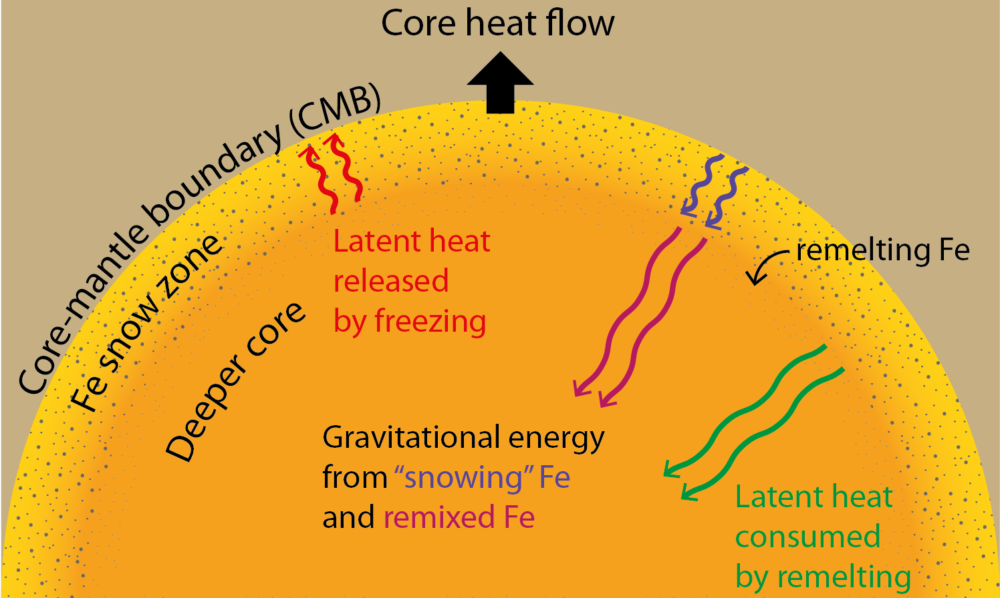A fundamental question in planetary science is to explain the remarkable variability in the intensity and spatio-temporal properties exhibited by the magnetic fields of terrestrial bodies. These fields are generated in metallic cores, and hence the observed variability is likely tied to differences in the structure, dynamics and evolution of planetary interiors. Earth’s liquid core is slowly freezing from the bottom upwards as the planet cools, releasing the heat and light material that power the geomagnetic field. In contrast, recent studies suggest that the cores of the smaller terrestrial bodies including the Moon, Mercury, Mars, Ganymede and planetesimals freeze from the top down with solid iron particles “snowing” into the deeper core. The dynamics and evolution of bodies in this “iron snow” regime is profoundly different to those of Earth. Current models indicate that iron snow plays a vital role in sustaining planetary magnetic fields, but they assume that solid and liquid instantly come into equilibrium, an over-simplification that has recently been shown to significantly affect the model behaviour. It is now time to develop the next generation of iron snow models in small terrestrial bodies.
The goal of this working group is to bring together theoreticians, modellers and experimentalists in order to develop the first non-equilibrium iron snow model of long-term planetary evolution. The basis for the work is a purely mathematical theory of non-equilibrium slurries. Objective 1 of the work is to make this complex theory fit for application to terrestrial bodies in a similar way as has been done for the equilibrium iron snow case. The description of non-equilibrium, however, will require the macroscopic parameterization of microscopic processes. Objective 2 is thus to constrain the model using experimental results. Finally, Objective 3 is to compare the new non-equilibrium model to the established equilibrium case and then apply it to Mercury, Mars and Ganymede in order to establish the thermo-chemical and magnetic histories of these bodies.
